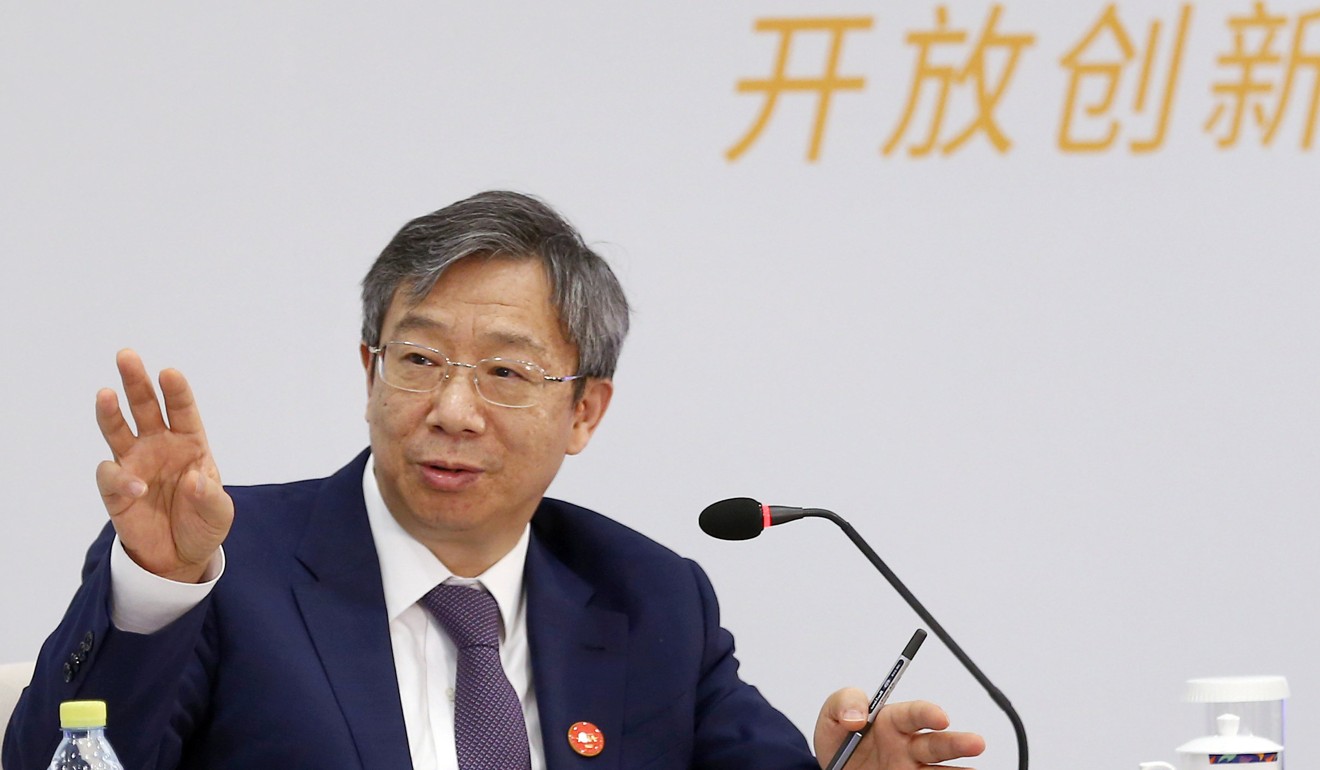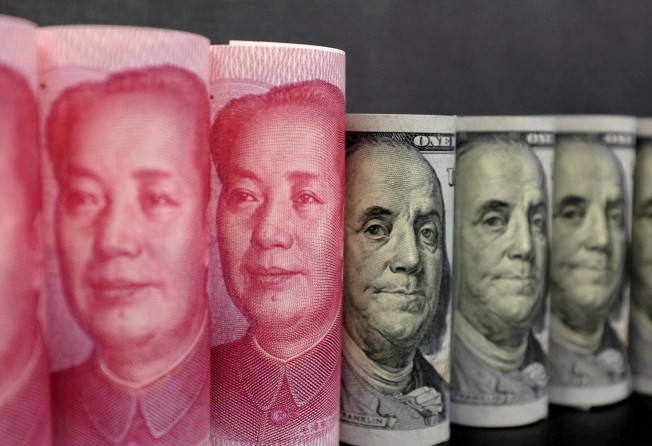
China’s moves to open financial markets to foreign investors risk a weaker yuan, analysts say

China’s efforts to open up its capital markets to a broader set of foreign investors are expected to lead to greater domestic market volatility and more money flowing in and out of the country, analysts said.
In particular, the exchange rate of China’s currency, the yuan, may weaken further as the People’s Bank of China (PBOC) allows market forces to play a greater role in setting its value, while it focuses on ensuring the greater volatility does not result in excessive market movements.
The measures being adopted by the government suggest the PBOC may be moving towards a yuan foreign-exchange regime that is flexible enough to make China’s capital account more accessible. It seems geared towards encouraging more widespread use of the yuan for transactions and central-bank reserves while guarding against panic-selling and herd behaviour in trading of the currency.
Overseas funds have already started to play a bigger role in the Chinese bond market, increasing the possibility that funds will start to flow out of the country, causing greater currency depreciation. Foreign holdings of Chinese bonds increased by 71.6 billion yuan (US$10.5 billion) to a record 1.68 trillion yuan in August, according to data from the Central Depository and Clearing Co and Shanghai Clearing House. The increased foreign holdings come ahead of the anticipated inclusion of Chinese government and policy-bank bonds in global bond market indices from next April.
More foreign capital is also expected to flow into Chinese equities as global index provider MSCI considers plans to increase the weighting of Chinese A shares in its flagship emerging-market index to 20 per cent next year. Foreign investors continued to buy more Chinese domestically-traded shares than they sold for a seventh straight month. Net inflows came to US$2.6 billion in September, according to BNP Paribas, bringing the year-to-date total to US$37.1 billion even as the trade conflict with the United States intensified.
“We are in an environment where the yuan is trending lower but it’s clear that the PBOC is ensuring that the market will remain orderly,” said David Beale, Asia Pacific co-head of institutional client coverage at Deustche Bank Singapore.
“Our clients are cautiously timing their entry into China’s bond market, and we are likely to see interest pick up going into April [next year] and as the currency becomes more internationalised.”
The yuan’s value has dropped by 6.2 per cent against the US dollar this year, hitting its weakest level in 21 months on Thursday. Other Asian currencies have also declined because of the stronger US dollar and higher US Treasury yields.
Ken Cheung Kin-tai, senior Asian strategist at Mizuho Bank, noted that a slew of Chinese officials and scholars in recent weeks have embraced a gradual and controlled decline in the yuan below the closely watched and psychologically important mark of 7 per dollar, downplaying the idea that such a level would trigger a financial crisis given the nation’s economic fundamentals.

“We must accept the consequences and subsequent changes, including the impact on the exchange rate,” Yi said. “Fortunately, we have seen a stable yuan performance so far this year … [but] we are prepared for the worst.”
Yi’s comments appeared to show Beijing is comfortable with the idea that its looser policy settings, combined with tighter US monetary policy, would send the yuan down further versus the greenback, analysts said.
Liu Shijin, a member of the PBOC’s monetary policy committee, argued the yuan’s natural equilibrium level was a dynamic concept, changing with the economic environment and that the focus on whether the currency would break below or hold above 7 to the US dollar missed the point. Former PBOC advisor Yu Yongding, in an article published in the state-run China Securities Journal this week, said China should persist with its non-intervention currency policy even if the yuan did fall below the key 7 level.
So far, capital outflows have been moderate and market behaviour orderly, allowing the central bank to stop its direct large-scale intervention to support the currency by selling its reserves. Foreign exchange reserves decreased by a modest US$23 billion in September to US$3.09 trillion.
Any further significant weakening of the yuan, however, is likely to draw the ire of the US government.

US Treasury Secretary Steven Mnuchin warned again on Wednesday that the US would be keeping its eye on the yuan exchange rate to make sure that China did not use a devaluation for economic advantage. Mnuchin said on Saturday that Chinese officials at the International Monetary Fund’s annual meeting last week “emphasised to me that it is not in their interest to see the [yuan] continue to depreciate.”
Westpac Asia head of macro strategy, Frances Cheung, said China had installed a number of safeguard measures to prevent market shocks and massive capital flight. For instance, the PBOC can use its “counter-cyclical factor” in the calculation of the yuan reference rate to limit the pace and extent of the currency’s fall. The central bank also said it could sell short-term yuan-denominated securities in Hong Kong to tighten yuan liquidity, which would have the effect of supporting the value of the currency in offshore markets.
“The US dollar should remain supported in the coming weeks, which would continue to exert [downward] pressure on the yuan and it seems China is not too concerned about this,” Cheung said.